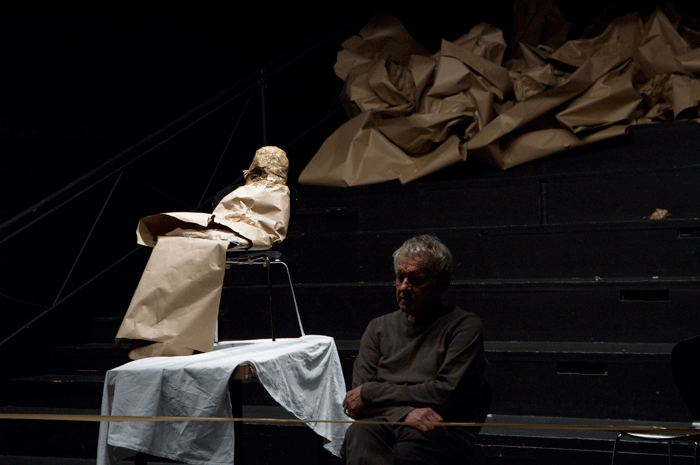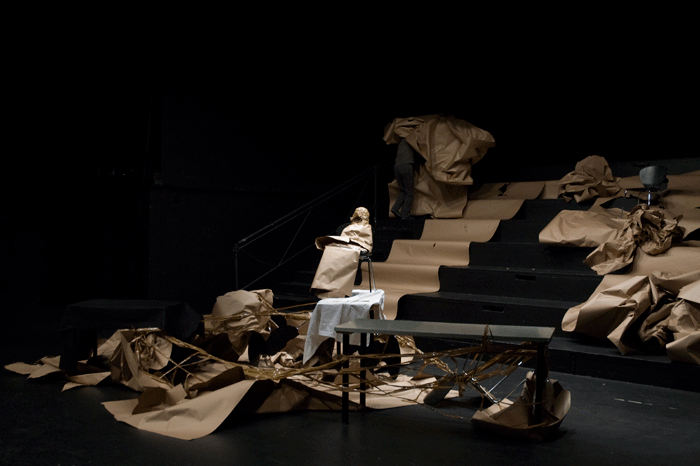

Cut is the last of a series of works which were made in response to the notion of 'The Last Breath' In this the last work the subject has become an expression of the relationship between acts of destruction and its inevitable interrelationship with its other, as in the Hegelian thesis/antithesis of the dialectic. Sound has been envisaged as the constructive element running through the procedures. It is an alternative voice where materials in contact with each other scream and groan suggesting agony which is found at both ends of the spectrum of human experience. The fact that it is not human offers a means of projection to apply an awful protestation which lies at the heart of the matter.
Because Cut took place in a theatre, it has been turned upside down by disjointing the usual audience stage relationship i.e the stage becomes the place for the audience and visa versa. This is played out in different ways throughout the work leading eventually to stasis where one of the two human images is decapitated leaving the other amid the detritus which has also been returned to a semblance of order having been previously destroyed. The live figure and the other human representation are the leading contestants, one alive and actively engaged in the dichotomy between the destructive process and its potentiality for new beginnings as exemplified by sound; and the other a representation of a human presence seen as the other. They interact but exist on separate planes of being. The decapitation of the other might be seen within the context of the violent contradictions of capital.